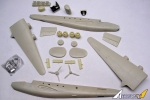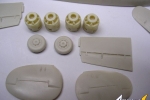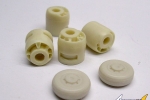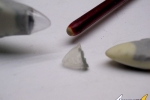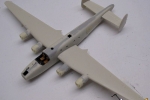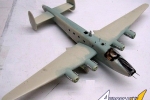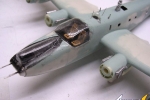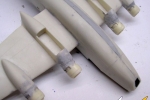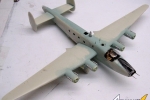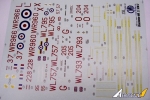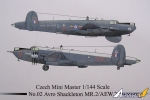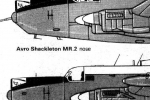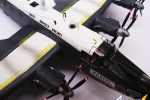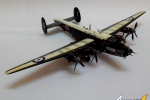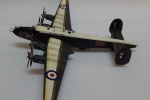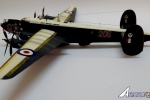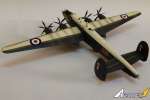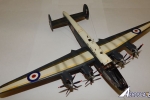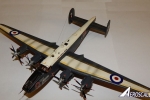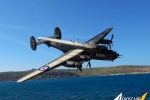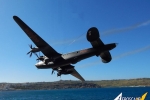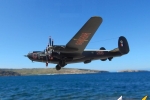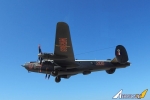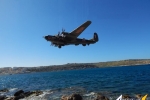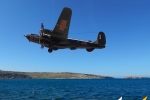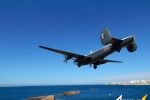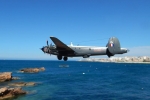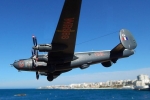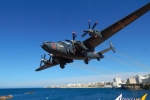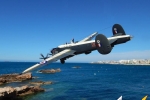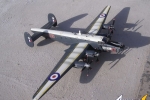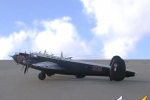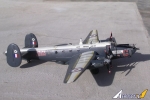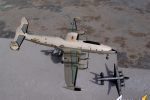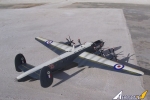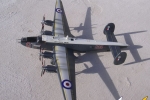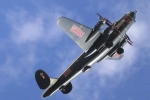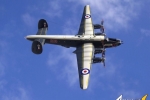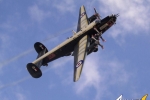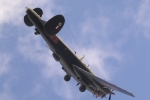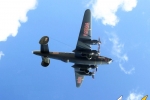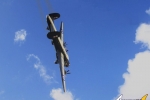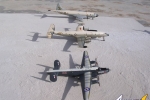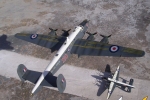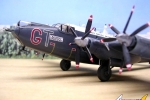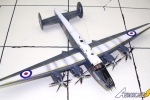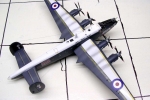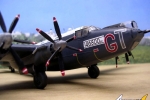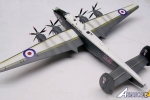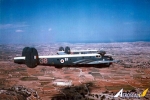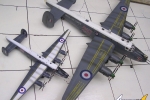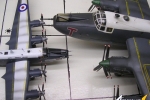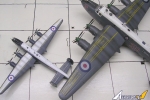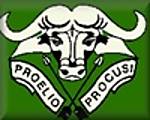1⁄144Shackelton M.R. 2
2
Comments
History
The Shackleton aircraft is a maritime reconnaissance bomber famous for its variety of roles during its service life. This includes its role as a search and rescue aircraft, Airborne Early Warning and anti submarine warfare roles. Evolving from its famous predecessor the Avro Lancaster the Shackleton performed 38 years of service full of exciting if not daring rescue missions, as well as anti submarine and maritime reconnaissance missions by day and by night during the cold war and later towards the later years of its service life as an Airborne Early Warning aircraft.Named in honour of the great voyager and explorer, the Shackleton entered service with coastal command circa April 1951 as a MR 1 version. In due course an improved version was developed being the MR2. All marks of the Shackleton particularly the MR2 and MR3 were based in Malta with 37, then 38 and 203 squadrons at different periods with the MR2 spanning the longest period of the three types, mainly stationed at Luqa airfield and at times at Hal Far as well. The Shackletons gave way to the Nimrod, which formed 203 Squadron when the Shackletons MR3s were withdrawn.
The kit.
Having already built a 1/72 scale vac form kit of the Shackleton MR 2 by Gerald Elliott, and later the injection moulded Frog MR 3, I was wondering what the new CMR in resin was going to offer. This is a 1/144-scale model of the Shackleton and obviously was going to be a much smaller model than the other previous kits I built.The kit comes as either a MR2 or an AEW 2 version, thus providing parts needed to make either of the two. The parts are basically made of light tan colour resin that contain fine surface detail to control surfaces, door, windows, recesses in the fuselage for the correct location of the wing parts which would need the general clean up of parts as it is with all resin kits. Otherwise the parts are of accurate shape and outline.
The tiny rectangular windows and one round window on the fuselage side are only partially open and needs to complete the simple task of shaping these with a small set of needle files. The assembly drawing shown on an A4 size page indicates that the recess that appear on the integrally moulded nacelle inner part with the wing was intended to receive the outer engine nacelles but upon careful examining one soon realise that this is not so because there is no male part to coincide with the recess and therefore fitting of parts has to be carefully aligned as best one can.
At this small scale the Shackleton kit still works out into a reasonably sized model, with a wingspan of 10 3/16 inches and an overall length of 7 ¾ inches. The parts are packed in sealed polytene multiple packs to keep the parts intact and prevent parts damaging each other if these were packed together in one bag. These are then enclosed in a sizeable bag that also contains a colour double profile card. One needs to be careful with the small resin parts such as the 3 blade sets of propellers as three out of the eight provided already had a blade detached from the rest.
The kit also contains 17 shiny silver parts made of white metal which include the twin tail wheel undercarriage parts, main landing gear struts, eight exhaust pipes and various roof antennae to choose from. Clear parts are provided in duplicate in the event any of the spoilt during cutting and fitting.
Among the resin parts are the belly radome which comes in two parts if fitted in the retracted position or with a separate extended part if kit is built as “in flight” configuration with the random in fully lowered position. All wheel well doors contained guides to help fix these in their correct placement.
There is a one-page exploded view to facilitate assembly of the parts. Instruction detail and decals provide six different Shacks to choose from that include the mk2 or AEW2 version. The decal sheet is very comprehensive, and is well printed providing fine yellow walkway stencilling, squadron markings and perfect registered roundels and fin flashes.
Squadrons represented are those of 205, 204, 37, 228 and 8. I was rather disappointed not to find one representing an RAF Luqa, Malta based 38 Sq one until I realised that there were enough registration and squadron markings provided that a 38 Sq machine could still be made. Accurate side view drawings depicted on an A4 size sheet identifies the location of the markings and paint detail with respect to the Squadron one prefers to do the kit.
Obviously before one starts to put the fuselage halves together it would be wise to paint the tiny interior to ones liking and colour reference. I had once been inside one of the 38 Squadron Shackletons that happened to be based at Hal Far, Malta and all the surroundings appear to be painted black. Back to the kit, the pilot office and nose compartment parts were a bit proud and if left this way could not allow the two fuselage halves to come together, so these needed slight filing from the sides.
The Czech Mini Master resin kit turns into a pretty little model and looks so realistic with the correct dihedral wings and when placed on the undercarriage it has the definite correct sit angle, that brings so many memories of the type Mk 2 quietly resting on the tarmac at its dispersal at Luqa or Hal Far airfield many a Sunday quiet evenings. Enough information is provided and other reference material could be made to SAM Vol 12 No9 June 1990 and Aircraft Profile 243, both of which I happened to have and in each case have detail for all the versions. A good Shackleton web site would be Shack Onewhich contains history of even the ones that are represented in the kit. One point that I want to raise is that since there is provision for the kit to be built in flying configuration and radome fully extended, then a simple stand should have been provided. Having said that I am very pleased with the final results that have all the characteristics of the aircraft.
conclusion
The Shackleton kit definitely represents the type with many admirers as it has spent such a long service with RAF and and also served with the South African Air Force. It also form part of Cold War type bombers. I took the liberty in taking photos of the model with St Paul’s Bay as backdrop as many times I have spotted the Shackleton MR2 making low passes along the bay during maritime exercises throughout the 60s, bringing all the happy memories of those good old days.Comments
Brings back memories of see South Africas Shackeltons as kid on coastal patrol flights
MAY 03, 2014 - 09:28 AM
Copyright ©2021 by Carmel John Attard. Images also by copyright holder unless otherwise noted. The views and opinions expressed herein are solely the views and opinions of the authors and/or contributors to this Web site and do not necessarily represent the views and/or opinions of AeroScale, KitMaker Network, or Silver Star Enterrpises. Images also by copyright holder unless otherwise noted. Opinions expressed are those of the author(s) and not necessarily those of AeroScale. All rights reserved. Originally published on: 2014-05-03 02:44:48. Unique Reads: 5491





